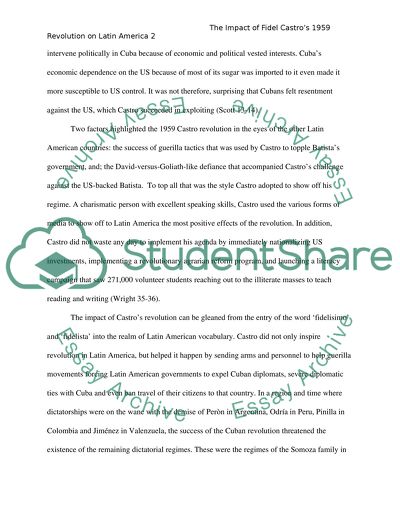Cite this document
(“The effect Fidel Castros 1959 revolution had on Latin American Essay”, n.d.)
Retrieved from https://studentshare.org/literature/1438284-the-effect-fidel-castros-1959-revolution-had-on-latin-american-countries
Retrieved from https://studentshare.org/literature/1438284-the-effect-fidel-castros-1959-revolution-had-on-latin-american-countries
(The Effect Fidel Castros 1959 Revolution Had on Latin American Essay)
https://studentshare.org/literature/1438284-the-effect-fidel-castros-1959-revolution-had-on-latin-american-countries.
https://studentshare.org/literature/1438284-the-effect-fidel-castros-1959-revolution-had-on-latin-american-countries.
“The Effect Fidel Castros 1959 Revolution Had on Latin American Essay”, n.d. https://studentshare.org/literature/1438284-the-effect-fidel-castros-1959-revolution-had-on-latin-american-countries.


